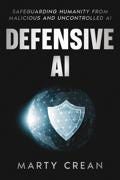AI Agents and Considerations for Linking Them to Your Digital Identity

This post is also available as a podcast if you prefer to listen on the go or enjoy an audio format:
As our world becomes increasingly digital, artificial intelligence agents are essential companions in our online and physical lives. These sophisticated digital assistants are transforming how we interact with technology, automating our daily tasks and helping us make better decisions. But what exactly are these AI agents, and what should we consider when connecting them to our digital identities? This exploration investigates the nature of AI agents and examines the crucial factors to consider when integrating them into our personal and professional digital presence.
At their core, AI agents are sophisticated software entities designed to understand and interact with their environment. Think of them as digital assistants that can perceive information, process it meaningfully, and take actions to achieve specific goals. These agents range from simple chatbots that follow predetermined rules to complex autonomous systems that can learn and adapt from their experiences.
The world of AI agents is rich and diverse. Some agents, known as reactive agents, operate like skilled chess players — they follow specific rules and respond to situations based on predetermined patterns but don’t learn from past games. More sophisticated deliberative agents act like strategic planners, carefully weighing options before making decisions. Learning agents, perhaps the most intriguing category, behave more like human learners, continuously improving their performance through experience and feedback.
The most advanced autonomous agents operate independently, making decisions without constant human oversight. In complex scenarios, multiple AI agents might work together in what we call Multi-Agent Systems (MAS), coordinating their efforts like a well-orchestrated team to tackle challenging tasks that would be difficult for a single agent to handle alone.
Our digital identity encompasses everything that represents us online — from social media profiles and email accounts to digital signatures and online banking credentials. When we connect AI agents to these digital identities, we empower ourselves with powerful tools that can remarkably enhance our online presence and capabilities, giving us more control and confidence in our digital interactions.
This integration offers several compelling advantages. AI agents can learn our preferences and habits, allowing them to personalize our digital experiences meaningfully. They can streamline our daily routines by automating repetitive tasks, from scheduling meetings to managing email responses. Regarding security, AI agents can serve as sophisticated guardians of our digital identity, using advanced techniques like biometric recognition and behavioral analysis to protect against unauthorized access.
The ability of AI agents to process large amounts of data and identify patterns makes them invaluable decision-making partners. They can analyze market trends, assess risk factors, and reveal insights that might not be apparent to human observers. This capability transforms them from simple automated assistants into strategic advisors, keeping us informed and guided in our personal and professional decisions.
Despite these benefits, integrating AI agents with our digital identities has risks. Privacy concerns stand at the forefront of these challenges. AI agents require access to personal data to function effectively, raising important questions about data protection and potential misuse. The risk of cybercriminals exploiting AI-linked identities for fraud or unauthorized access demands serious consideration.
We must also grapple with the issue of bias in AI systems. AI agents learn from historical data, which often contains societal biases. Without careful attention to bias mitigation, these agents might perpetuate or amplify unfair treatment in their decision-making processes. This becomes particularly concerning when AI agents make important decisions affecting people’s lives, from loan approvals to hiring recommendations.
Legal and ethical questions also emerge when AI agents act on our behalf. Who bears responsibility when an AI agent makes a decision that leads to harmful consequences? How can we balance transparency in AI decision-making with the need to safeguard proprietary algorithms? These questions require careful consideration as we integrate AI agents into our digital lives.
To harness AI agents’ benefits while minimizing risks, organizations and individuals must adopt robust security measures and ethical guidelines. This includes implementing strong encryption protocols to secure sensitive data and comply with regulations like GDPR and CCPA. Multi-factor authentication should become standard practice for AI agent interactions to protect sensitive data, adding layers of security to protect digital identities.
Users should maintain control over their AI-linked identities, with clear visibility into how their AI agents operate and make decisions. This control empowers users, making them feel more secure and responsible for their digital interactions.
Integrating AI agents with digital identity represents a significant step forward in our interaction with technology. When implemented thoughtfully, this combination offers unprecedented opportunities for personalization, efficiency, and enhanced security in our digital lives. Success in this domain requires balancing innovation with responsible practices, ensuring that AI remains a positive force in digital identity management while protecting individual privacy and security.
As we continue to explore and expand the capabilities of AI agents, maintaining this balance will be crucial. The future of AI and digital identity holds immense promise, but realizing that promise depends on our commitment to addressing challenges head-on and implementing solutions that prioritize both progress and protection.
By understanding these opportunities and challenges, we can work toward a future where AI agents enhance our digital lives while preserving our privacy, security, and autonomy. This thoughtful integration of AI with digital identity will help shape a more efficient, secure, and user-centric digital world for everyone.
Thank you for being a part of this fascinating journey.
BearNetAI. From Bytes to Insights. AI Simplified.
BearNetAI is a proud member of the Association for the Advancement of Artificial Intelligence (AAAI), and a signatory to the Asilomar AI Principles, committed to the responsible and ethical development of artificial intelligence.
Books by the Author:


Categories
Artificial Intelligence, Digital Identity, Cybersecurity, Privacy, Ethics
Glossary of AI Terms Used in This Post
Algorithm: A step-by-step procedure used by AI to process information and make decisions.
Artificial General Intelligence (AGI): A hypothetical AI system capable of performing any intellectual task a human can.
Autonomous Agent: An AI system that operates independently, making decisions without direct human intervention.
Bias: Systematic errors in AI decision-making caused by flawed data or design.
Encryption: The process of converting data into a secure format to prevent unauthorized access.
Machine Learning: A branch of AI that enables systems to learn and improve from experience without explicit programming.
Multi-Agent System (MAS): A framework in which multiple AI agents work together to achieve common goals.
Neural Network: A computational model inspired by the human brain that processes data in layers to recognize patterns.
Privacy-Preserving AI: Techniques designed to allow AI to operate on data without exposing sensitive information.
Reactive Agent: An AI agent that responds to inputs without storing historical data or learning from past interactions.
Security Token: A digital asset used to authenticate and authorize identity in AI-driven systems.
Cited Works
Blum, A., & Dabbish, E. (2021). IoT Security Challenges: The Case of AI Botnets. Springer.
Goodfellow, I., Bengio, Y., & Courville, A. (2016). Deep Learning. MIT Press.
Leslie, D. (2020). Understanding Artificial Intelligence Ethics and Safety. The Alan Turing Institute.
Mitchell, T. (1997). Machine Learning. McGraw Hill.
Russell, S., & Norvig, P. (2021). Artificial Intelligence: A Modern Approach. Pearson.
BearNetAI, LLC | © 2024, 2025 All Rights Reserved